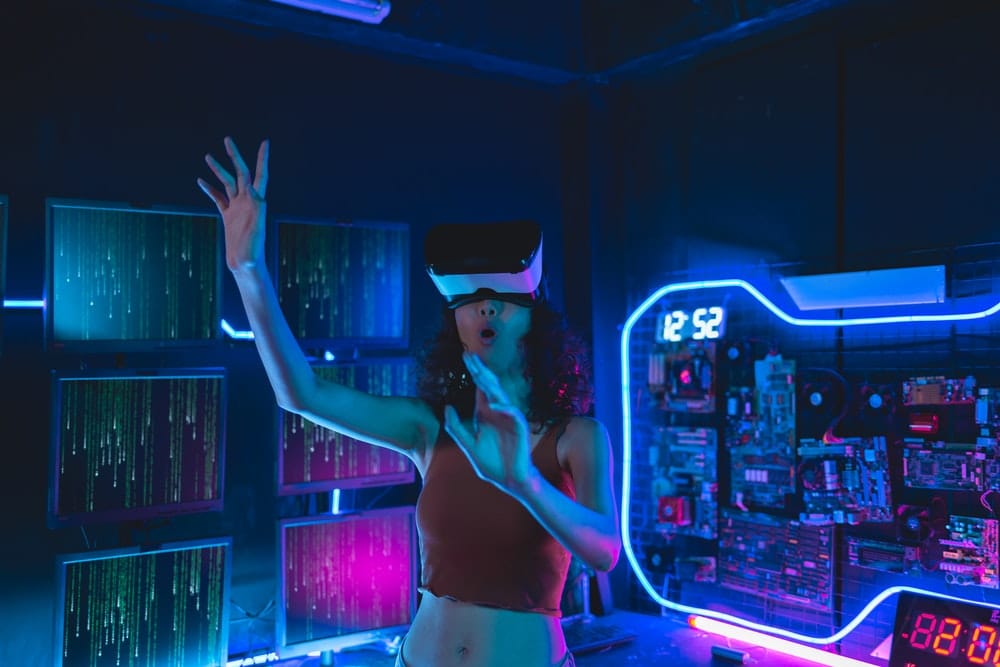How Can Mixed Reality Training Simulators Aid in Cricket Batting Techniques?

We live in an era where technology is deeply intertwined with various sectors of our lives. One such field that has seen significant technological advancements in recent years is sports. The use of technology in sports has not only made it more interactive and engaging for viewers, but it has also proven extremely beneficial in improving players’ skills and performance. This piece focuses on one particular sport — cricket — and the remarkable role of mixed reality training simulators in enhancing batting techniques.
Leveraging Virtual Reality in Cricket Training
As cricket enthusiasts, you might be wondering how the virtual world can be aligned with the physical component of sports. The concept of virtual reality (VR) in cricket training is a novel approach that uses highly sophisticated technology to create a simulated environment for players.
Also to see : How Can Real-Time Stroke Analysis Benefit Competitive Rowers?
In the cricket game, VR technology is primarily focused on batting practice. The system is designed to mimic the real-time experience of standing in a stadium, facing a variety of ball deliveries from a virtual bowler. Through this technology, players can practice their batting techniques in a controlled and risk-free environment that closely emulates the conditions of a real cricket match.
The Impact of VR on Player Skills and Performance
Using VR in cricket training offers several benefits that directly impact players’ skills and performance. By practicing in this virtual environment, players get real-time data on their performance, which helps them improve their batting techniques over time. This data includes detailed analytics about the speed, angle, and direction of the ball, as well as the player’s response time and bat swing.
This might interest you : What’s the Role of Stochastic Resonance Therapy in Balance Improvement for Skaters?
With this technology, players can also practice against virtual bowlers that mimic the bowling styles of real-world players. This kind of experience provides invaluable practice time for batsmen, allowing them to improve their shot selection and timing before stepping into the actual field.
The Physical Aspect of Virtual Reality Training
While virtual reality provides a controlled environment, it does not make the practice any less physical. In fact, the use of mixed reality training simulators can improve the physical aspects of cricket.
Through the use of motion-capture technology, players’ movements are tracked and replicated within the virtual environment. This offers players the opportunity to work on their physical training as they enhance their batting techniques. It is also beneficial in preventing possible injuries as players can work on their form and posture in a controlled environment before applying it in an actual game.
Adapting to the Changes in Training Methods
The use of this technology is a significant shift from traditional training methods. However, its benefits have made it a worthy addition to cricket training. The ability to practice in a simulated environment that closely mimics real-world conditions, with real-time data on performance, allows players to adapt and improve their techniques more effectively.
As is the case with any change, there is a learning curve when it comes to adopting VR technology for training. Players need time to adapt to the virtual environment and the new training methods. However, once they become comfortable, the benefits of this technology become apparent.
The Future of Cricket Training
As technology advances, there is no doubt that it will play an even more significant role in cricket training. The use of mixed reality training simulators is just the tip of the iceberg. It is exciting to ponder the potential advancements that lie ahead.
While the technology is currently focused on batting, it is not difficult to envision a future where every aspect of cricket can be simulated, from fielding to bowling. This would allow players to improve their overall performance, making the game more competitive and exciting.
So, while we relish the cricket matches today, we can look forward to a future where players’ skills and performances are continually improving, thanks to the advancements in technology. This evolution marks an exciting time for all cricket enthusiasts.
As we watch this unfold, let’s remember that at the heart of these advancements lies the goal of enhancing the sport and the skills of players. And in this journey, mixed reality training simulators play a critical role, bringing the virtual and physical worlds together in a way that benefits everyone involved — players, coaches, fans, and the sport of cricket itself.
Enhancing Decision Making with Real-Time Feedback
In the fast-paced world of cricket, decision making is often the difference between winning and losing a match. With the integration of virtual reality technology in cricket training, players are given a unique opportunity to make better, more informed decisions during play.
Virtual reality simulation provides a three-dimensional view of the game, where players can practice various techniques and strategies in a controlled environment. This technologically advanced form of training allows players to face different types of deliveries, bowling speeds, and even specific bowler styles. It effectively creates a realistic environment where players can practice their skills and techniques without physical constraints.
Perhaps, the most significant contribution of this technology is the real-time feedback it offers. Detailed analyses on the speed, angle, and direction of the cricket ball, as well as the player’s response time and bat swing, are made readily available. This real-time data provides players with immediate feedback, allowing them to understand their strengths and weaknesses better and make necessary adjustments to their techniques and strategies.
Furthermore, the use of haptic feedback in virtual reality cricket has been instrumental in improving player’s perception-action coupling. This involves using virtual cues to help players anticipate the direction, speed, and bounce of the cricket ball, thereby improving their decision-making skills.
Impact of Video Games on Cricket Batting Techniques
Interestingly, the application of video games in cricket training has become increasingly popular. This is mainly due to the immersive nature of the gaming environment, which allows players to practice and improve their skills in a fun and engaging manner.
Video games incorporate the same virtual reality environment principles used in training simulators. They provide a three-dimensional, interactive environment where players can practice various batting techniques. With the advancement in technology, these games have become more realistic, mimicking the conditions and challenges faced in an actual cricket match.
Moreover, the competitive aspect of video games can also be beneficial. It can drive players to push their boundaries and strive for improvement. This, coupled with the real-time feedback provided, can result in significant improvement in players’ batting techniques and performance over time.
In Conclusion
The advent of virtual reality technology in cricket training has revolutionized the way players practice and improve their techniques. It offers a controlled environment where players can practice in real-world conditions and receive immediate feedback on their performance, thereby improving their decision-making skills and overall performance.
The application of video games in cricket training has also proven to be beneficial, making training sessions more engaging and competitive, which can drive improvement.
As the world of cricket continues to embrace these technological advancements, it is clear that the future of cricket training looks bright. With the possibility of simulating every aspect of the game, from fielding to bowling, players will have a comprehensive platform to improve their performance.
In the grand scheme of things, the ultimate goal of leveraging mixed reality and virtual reality simulation in cricket is to enhance the sport and the skills of players. It provides players with an avenue to ‘train smarter, not harder,’ ultimately making the game more competitive and exciting for everyone involved — players, coaches, fans, and the sport of cricket itself.
